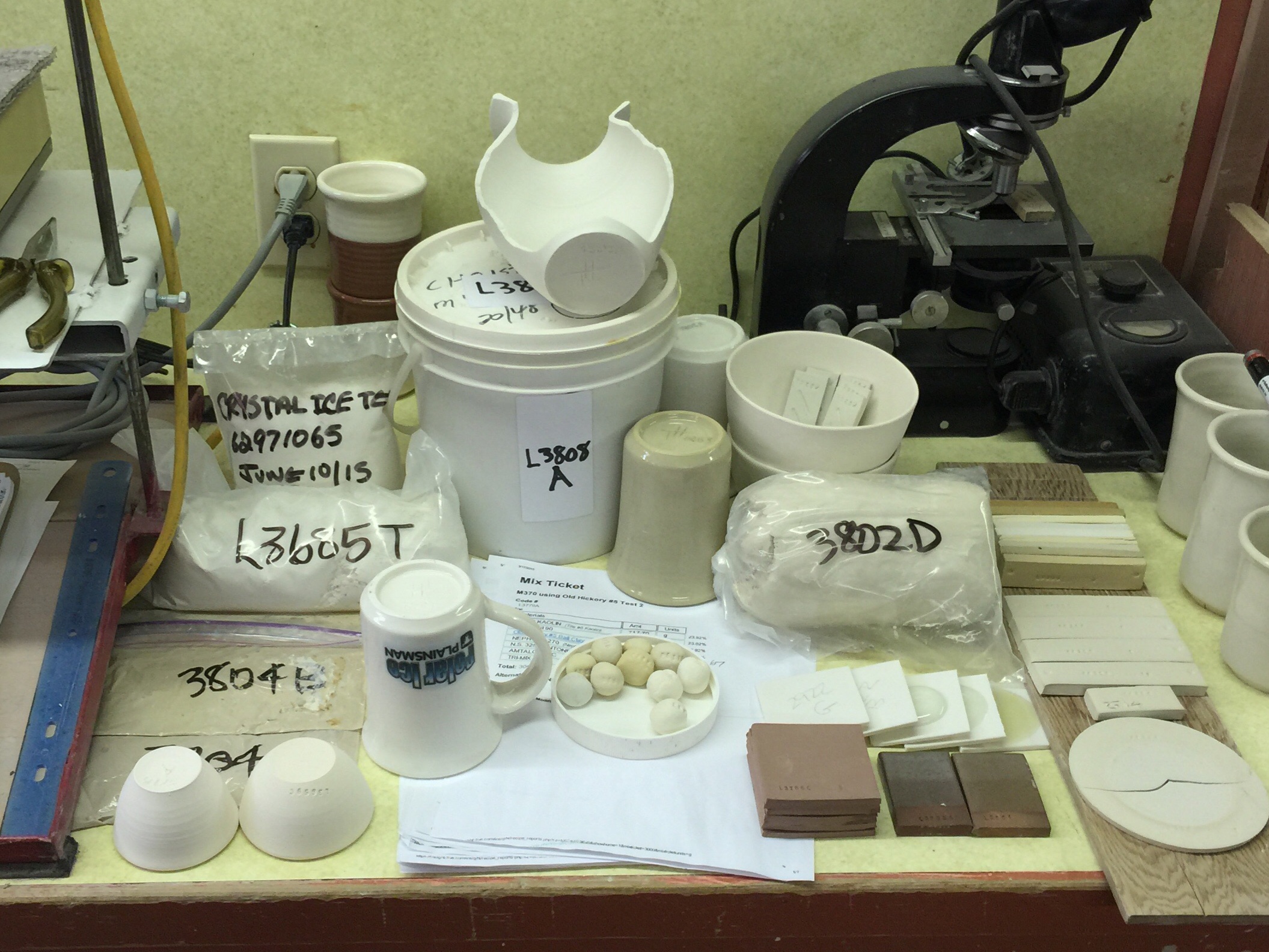| Monthly Tech-Tip | No tracking! No ads! | |
Code numbers are the key to organizing your studio or lab
The new ceramics is about data! Everything here has a code number (in the form x1234) that members of our team can search in our group account at Insight-live.com. We write the numbers on the bottoms of pots, plastic bags of powders/liquids/pugged, buckets, glaze balls, mix tickets, test bars, tiles, glaze samples, drying tests, flow tests, sieve analyses, LOI/water content tests, etc. Glazed fired pieces can have up to three numbers, the body, engobe and glaze. If something is lacking a number it goes in the garbage because it teaches nothing and is therefore taking up pointless space.
Related Pictures
Fitting an engobe to have the same firing shrinkage as the body

This picture has its own page with more detail, click here to see it.
The fired shrinkage of a clay can be measured accurately - and compared with that an engobe. Engobe-fit on terra cotta is very important because the bond is sintered, not glassy. These test bars show how this terra cotta body, L4170B, performs from cone 8 down to 06. Using the SHAB test procedure, I measured the dry and fired lengths of each bar and recorded the data in my Insight-live group account (it displays like the chart shown here). I compiled the same data for a super-white engobe, L3685Z3. Its calculated firing shrinkage came in much lower at all practical temperatures. At the target temperature of cone 02 a 5% addition of Ferro Frit 3110 increased the firing shrinkage from 2.1% to 5.5% (while the red body is 4.3%). To better the match I adjusted to 3% frit. What about matching the thermal expansion? I don’t have a dilatometer so I slurried up the engobe and used it as a body, it fits the same glazes without crazing or shivering (demonstrating they are under some compression).
Every studio, lab, classroom needs a good label printer

This picture has its own page with more detail, click here to see it.
This is an Epson LW-600P (replaced by the LW-PX400 in 2021, but still available on eBay). It generates durable water-proof labels that are perfect for identifying buckets and jars of materials and glazes. Apps are available for iOS, Android, Windows and Mac. You can insert a QRCode on to a label (perfect for taking someone to an SDS or information page). Insight-live emphasizes assigning unique code numbers to all recipes you create and maintain, this is the perfect way to prominently display it. We find the yellow 18mm labels work well to display code numbers (the white 22mm for detail). The cartridges snap in in seconds so it is easy to change them. While the printer does support blue-tooth, enabling anyone with a phone to use the device, for routine label-making it works best when USB-connected on a desktop computer (the app works better and there is no waiting).
Videos
Links
| Glossary |
Code Numbering
In a ceramics lab, studio or classroom specimens of hundreds of glazes and bodies may be present. A code numbering system that links these to written or computer records is essential. |
| Glossary |
Digitalfire Insight-Live
A cloud-hosted ceramics-targeted LIMS (lab info management system). It does glaze chemistry and physical testing the “Digitalfire way”. For technicians, educators, potters and hobbyists. |
Got a Question?
Buy me a coffee and we can talk

https://digitalfire.com, All Rights Reserved
Privacy Policy

